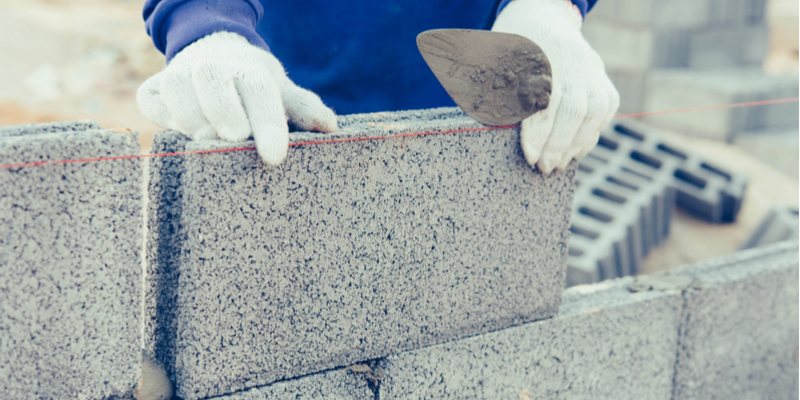Bricks vs. blocks, which one is stronger? Both concrete block and conventional brick are strong, resistant to fire, have a lot of thermal mass, and can last a long time. While these two commonly used building materials have a lot in common, there are things that set them apart.
If you are trying to decide which material to use for construction, it’s important to know the differences, as well as the pros and cons of both bricks and concrete blocks.
Concrete blocks are made from pure concrete, which is finely crushed sand or stone. Concrete is made from cement and aggregates, when combined a chemical reaction occurs and produces the strength of concrete.
A traditional clay brick is made from a mixture of sand, lime, and concrete materials. Traces of barium, manganese, and additional additives are combined with clay to create different types and colors of brick. Barium carbonate is added to enhance brick’s ability to resist the elements.
Overall Strength
The Masonry Advisory Council states that the minimum compressive strength for concrete blocks is 1900 pounds per square inch. Although, keep in mind, dense blocks are often stronger than this.
The Mechanical Properties of Unreinforced Brick Masonry reports that the average concrete block can handle around 3500 psi. On the other hand, your standard clay brick can withstand 3000 psi.
The strength of a concrete block or brick wall depends on the mortar holding the blocks together. Mortars that are rich in lime are weaker than mortars that are heavy in cement. For comparison, a lime-dense mortar can withstand around 350 psi, while a high-cement mortar can withstand 3000 psi.
Insulation Value
On average, brick walls have an insulation value (R-value) of 0.2 per square inch.
By comparison, the average 8-inch concrete block has an R-value of 0.08 per square inch – or 2.5 for the entire block. Adding insulation to concrete blocks increases R-value by around 1.2 per square inch, while air-entrained blocks can reach R-values as high as 3.9.
Which One Weighs More?
Brick and blocks are both heavy materials, but the exact weight varies based upon the materials used, size of the blocks, and type of construction. Your standard clay brick will weigh somewhere in the neighborhood of five pounds. While an 8-inch concrete block can weigh as much as 43 pounds.
Looking for a lighter weight block? There’s the option for autoclaved aerated concrete, also known as lightweight block, which weighs around 80 percent less than traditional blocks. Although they are the same size, they contain as much as 80% air.
Which One Cost More?
The cost of clay bricks and concrete blocks are pretty comparable – and tend to vary by as little as 20 cents a block, with clay brick typically on the higher side. Although, if you opt for specialty blocks, for instance lightweight blocks, costs can go up considerably, by a couple dollars per block. The weight of blocks will also influence the cost of installation, with heavier blocks costing more than lightweight varieties.
Traditional brick masonry is more expensive to install because it requires a greater deal of skill and experience. On the other hand, concrete masonry requires less expertise.
Benefits of Bricks
- Bricks have a high thermal mass and, as a result, are great at absorbing heat in the day and then slowly releasing it at night. This helps keep your home or building cooler and more comfortable.
- Bricks are made from readily available natural materials that can be recycled and reused.
- Solid traditional bricks are hardy and stronger than hallow blocks.
- Very resistant to fire
Benefits of Blocks
- Tend to be cheaper to purchase and install
- Can be made from pre-existing waste including Fly Ash, a residue produced by thermal power plants
- Concrete tends to stand up better to hurricanes, tornadoes and earthquakes
- High density helps make blocks more soundproof

